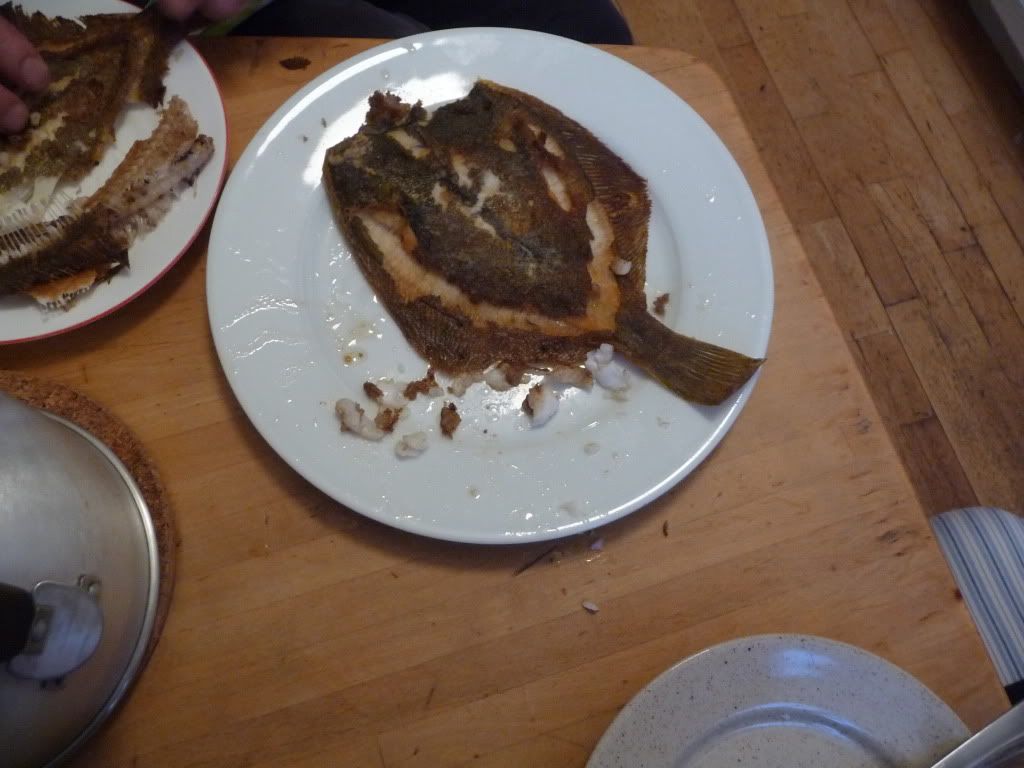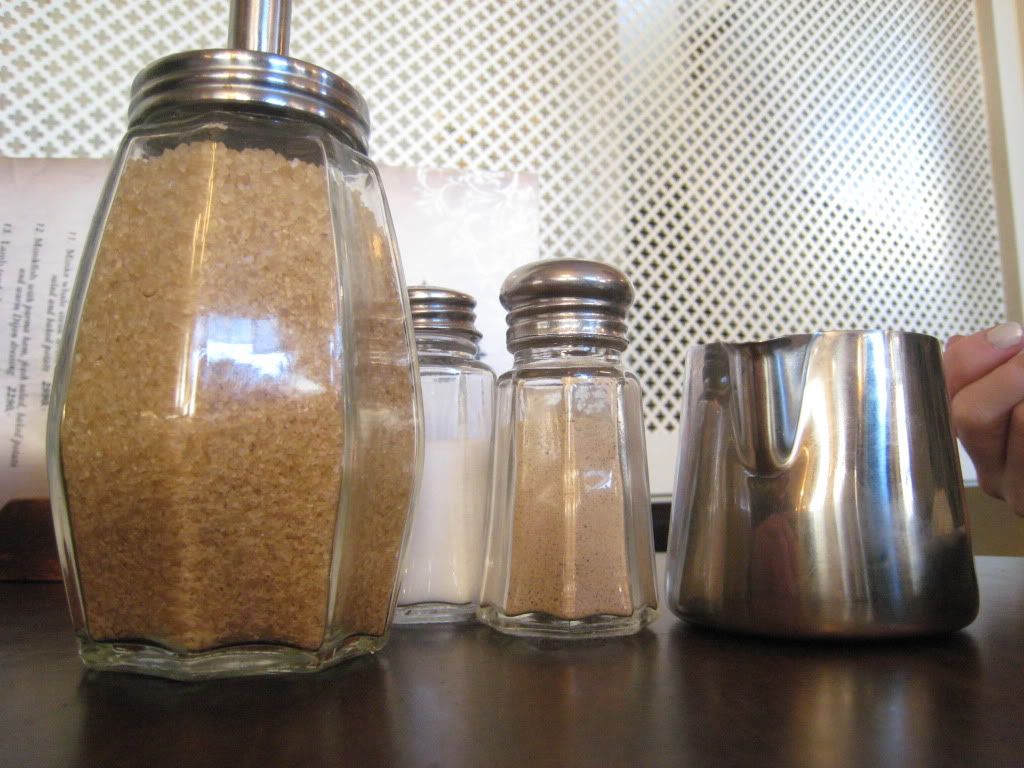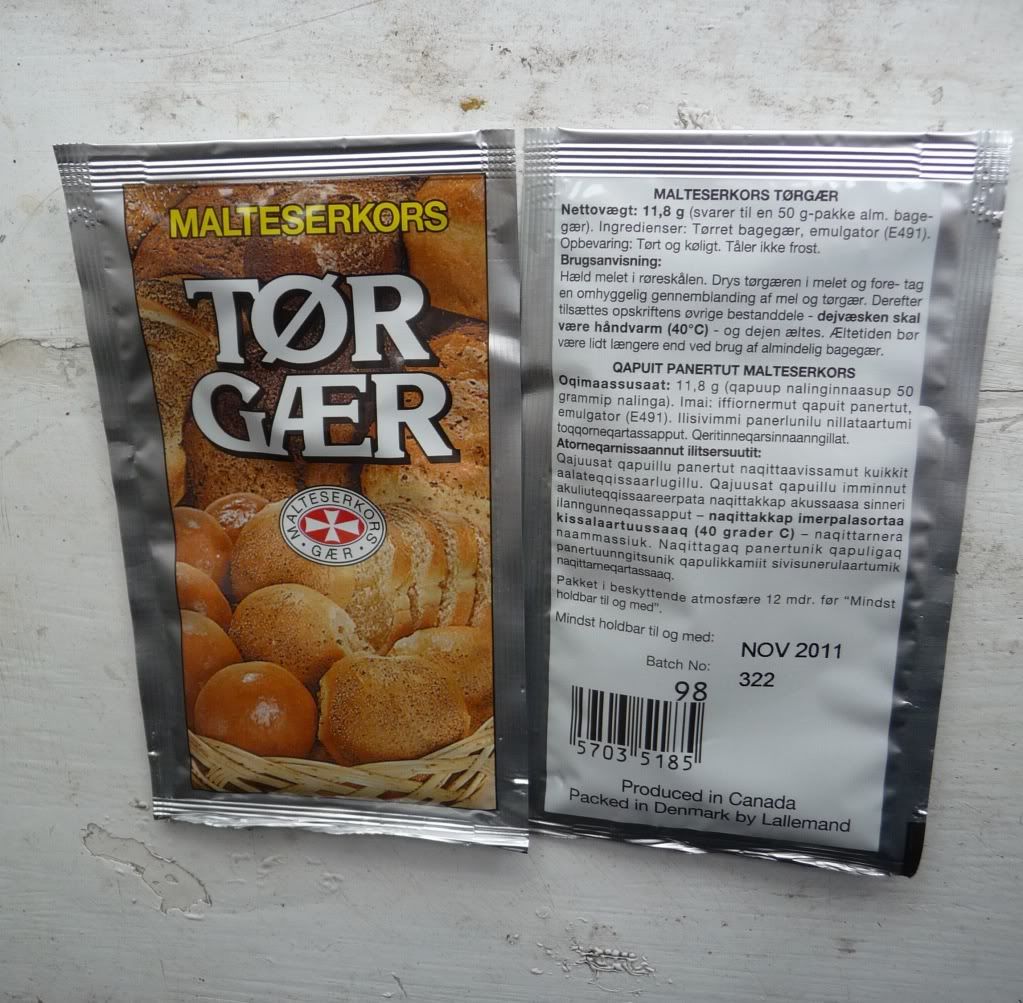Cooking and Seasoning Info Posted by sequoia on Jan 29, 2012 in Icelandic culture
I’m from America, so I don’t know everything about how they cook in the rest of Europe (or anything about the rest of the world). My observations will be based off that.
First, here is a list of seasoning terms (if you want any more, just let me know). However, half the time you’ll only find seasoning bottles in English or Scandinavian. Often the Scandinavian looks similar enough to to the Icelandic that you can guess, though:

In Iceland in restaurants, I’ve only ever seen white pepper or a mix of white and black pepper (never black pepper alone). It looks brownish, like this:
Baking ingredients are also often in Scandinavian. I don’t think I’ve ever seen yeast packages in Icelandic (I’ve never seen caked/block yeast here, only dry/powdered yeast). This yeast package has Danish and Greenlandic on it – this is the only packaging I’ve ever seen with Greenlandic, too.
Yeast – ger
Caked yeast – pressuger “pressed yeast”
Dry yeast – þurrger “dry yeast”, perluger “pearl yeast”
Meats are quite, quite different from in America. Even if it says the same thing (“pepperoni” is the biggest example) it can taste completely different, or cook differently. Also there aren’t usually pictures of what type of meat it is on the packaging.
Bacon – beikon (far less fatty than in America – with Icelandic bacon you have to actually add butter to the pan when cooking or they’ll stick to it and burn)
Double-smoked lamb – Hangikjöt (this doesn’t actually specifically mean lamb, but 90% of the time it does. This is a dish Icelanders are very proud of, and frankly even if you don’t like lamb you should try it because it tastes quite different from regular lamb)
Kjúklingur – chicken
Humar – lobster (you can buy lobster soup stock for quite cheaply in some places)
Hvalur – whale (usually minke whale – whale can also be found quite cheaply sometimes, especially if it’s minced/ground whale)
Hakk – minced meat (nautahakk – bull mincemeat, svínahakk – pork mincemeat, blandað hakk – mix of pork and beef mincemeat)
Hross – horse meat
Kjöt – meat
As a side-note, and this is only what I’ve noticed and heard so I can’t say it’s perfectly true, most Icelanders just put salt and pepper on their fish and fry it on a pan with butter. Apparently this is because for a very long time those were the only two seasonings you could even get in Iceland (later on paprika was introduced, and now you see a ton of recipes using paprika because when it first came to Iceland everyone was crazy about using this new thing). Some people might also make “whitesauce” which is a simple sauce out of milk and flour, but since I’ve only heard of that being referred to as something like “the English style of cooking fish” I can’t say if most Icelanders do that or not.
If you live near the harbour in Reykjavík, there at least you can fish without a fishing license, so you can catch your own fish. Below is an example of that!

(This fish was caught and cooked by my Polish flatmate and it was super delicious, but I have no idea how he did it because he couldn’t speak English OR Icelandic – somehow he filled the whole kitchen with smoke as he did so though, so if anyone reading this knows how this is done let me know!)
A funny exercise that I used to do all the time with Icelandic words is to look up what each part of the word means in the dictionary. Sometimes they make a lot of sense and sometimes they’re ridiculous… and sometimes you find really great similar words (like this: lúða – halibut, lúði – jerk). As most Icelandic words are actually compound words, this can build your vocabulary nicely.
Fish types that the Icelandic fishing companies have a yearly quota for:
Þorskur – cod (common in stores – the fish Iceland is most known for, look up “the Cod Wars” with Britain if you’d like)
Ýsa – haddock (common in stores – said to be the type of fish Icelanders eat the most)
Steinbítur – catfish (common in stores – if you’ve never had this, it’s a lot more chewy compared to cod and haddock)
Ufsi – Saithe, Coalfish
Karfi – red sea-perch, redfish
Langa – Ling
Keila – Torsk, Cusk, Moonfish, Brosmius (NOT the “Atlantic cod” as Googling “torsk” would lead you to believe)
Skötuselur – Anglerfish, Sea-devil
Flatfiskur – flatfish
Grálúða – Greenland Halibut (a flatfish)
Skarkoli- European plaice (a flatfish)
Þykkvalúra – Lemon Sole (a flatfish)
Langlúra – Witch (a fish), Righteye Flounder, Torbay sole (a flatfish)
Sandkoli – Common Dab (a flatfish)
Skrápflúra – American plaice (a flatfish)
Rækja – shrimp (singular – rækjur plural. Common in stores.)
Úthafsrækja – shrimp from “úthafssvæði – the pelagic zone”, the area in a sea or lake that’s not near either the shore or the bottom)
There are lots and lots of recipe sites, and recipe blogs, in Icelandic. Do a simple Google search of “uppskríft – recipe” and you’ll find some easily. I can do a post later on how to read recipes because for some reason there’s usually words that aren’t in the dictionary in them.

Build vocabulary, practice pronunciation, and more with Transparent Language Online. Available anytime, anywhere, on any device.
About the Author: sequoia
I try to write about two-thirds of the blog topics on cultural aspects and one-third on the language, because there's much more out there already on the language compared to daily life information. I try to stay away from touristy things because there's more of that out there than anything else on Iceland, and I feel like talking about that stuff gives you the wrong impression of Iceland.







